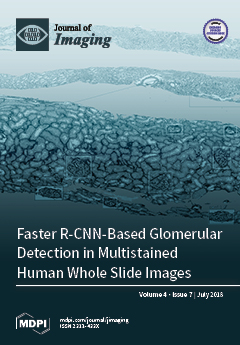This study aims to investigate a set of electrocardiogram (ECG) electrode lead locations to improve the quality of four-lead ECG signals acquired during magnetic resonance imaging (MRI). This was achieved by identifying electrode placements that minimized the amount of induced magnetohydrodynamic voltages (V
MHD) in the ECG signals. Reducing V
MHD can improve the accuracy of QRS complex detection in ECG as well as heartbeat synchronization between MRI and ECG during the acquisition of cardiac cine. A vector model based on thoracic geometry was developed to predict induced V
MHD and to optimize four-lead ECG electrode placement for the purposes of improved MRI gating. Four human subjects were recruited for vector model establishment (Group 1), and five human subjects were recruited for validation of V
MHD reduction in the proposed four-lead ECG (Group 2). The vector model was established using 12-lead ECG data recorded from Group 1 of four healthy subjects at 3 Tesla, and a gradient descent optimization routine was utilized to predict optimal four-lead ECG placement based on V
MHD vector alignment. The optimized four-lead ECG was then validated in Group 2 of five healthy subjects by comparing the standard and proposed lead placements. A 43.41% reduction in V
MHD was observed in ECGs using the proposed electrode placement, and the QRS complex was preserved. A V
MHD-minimized electrode placement for four-lead ECG gating was presented and shown to reduce induced magnetohydrodynamic (MHD) signals, potentially allowing for improved cardiac MRI physiological monitoring.
Full article






